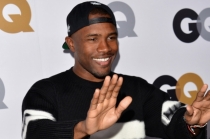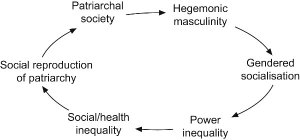“So the time you started smoking pot seems to
be around the same time you told me you left the soccer team. Do you think there’s a connection there?” The
look on Mark’s face was one I knew. I
had hit a bit too close to home with my questions. The young man in front of me
was being forced, likely for the first time in his life, to realize that his
decision making in life was not as arbitrary as he liked to imagine and that
perhaps his choice to turn to marijuana was his form of coping with loss.
“I’ve never thought about it, but I guess that makes some sense…I dunno.” That’s
20 year old college-male talk for “that’s exactly right, and now I’m even more
scared than I was prior to walking into this hearing.” We were onto something.
Mark was a 20 year college athlete who appeared to have it
all together. He was extremely athletic,
attractive, had an active social and dating life, was always helping others, and
grades came easy to him. That changed half way through the fall semester of his
sophomore year. Mark got injured and was unable to finish soccer season and
then got more crushing news from his doctor—he would never play soccer again.
Mark did a great job of keeping himself together for a
period of time, but quickly things spiraled.
He attempted to continue participating in soccer events and traveled
with the team, but the frustration he felt with being unable to play left extremely
lonely and depressed despite being surrounded by friends. Mark was in my office for his second drug
violation in a month, meaning suspension was likely.
It is a story I have seen too many times in my almost ten years of hearing conduct cases. Young men get cut from athletic teams or have career-ending injuries and suddenly their structured and successful lives begin to crumble. Sometimes it manifests itself in disruptive behavior like property damage, sometimes it is high-risk alcohol or drug use, and sometimes it’s more obvious that the student is struggling by exhibiting symptoms of depression and/or engaging in self-harm. After my first one or two students who fit this description, I was thinking it was coincidence, but after ten or fifteen I now realize it’s a pattern and a problem. We help our student athletes in a number of ways and offer them exceptional support, but at what cost to their development in other aspects of their life?
It is a story I have seen too many times in my almost ten years of hearing conduct cases. Young men get cut from athletic teams or have career-ending injuries and suddenly their structured and successful lives begin to crumble. Sometimes it manifests itself in disruptive behavior like property damage, sometimes it is high-risk alcohol or drug use, and sometimes it’s more obvious that the student is struggling by exhibiting symptoms of depression and/or engaging in self-harm. After my first one or two students who fit this description, I was thinking it was coincidence, but after ten or fifteen I now realize it’s a pattern and a problem. We help our student athletes in a number of ways and offer them exceptional support, but at what cost to their development in other aspects of their life?
By the time most college-level athletes arrive on campus,
they have often logged ten to fifteen years of intense involvement in their
sport. These students have spent summer at
tennis camps, weekends at softball tournaments, or school nights traveling to
soccer matches. Those who have had the
financial means have had private coaches, top equipment and have built their
life around their sport. And for many
the hard work has paid off in the form of scholarships. They then arrive on campus and engage in the
full-time job of practice and preparation, while attempting to find time for
coursework. For many student athletes the team is their support source, friend
circle, and strongest connections they have on campus, and often even off
campus. Coaches and athletic staff regularly serve as mentors and substitute parents—often
having more face time with these individuals than anyone else in their life.
While I am not proud of it, before Mark came into my office I thought “oh great, another pot-smoking soccer player.” I hadn’t realized he left the team, and clearly I hadn’t mastered my own biases. The conversation started very guarded—not wanting to share much. He took responsibility for the marijuana expected that was where our conversation would end. That’s where I inquired about the connection between use and his referrals to student conduct. And the flood gates opened. Mark shared his challenges, his pain, and his confusion. For athletes, getting cut from a team is not a disappointment similar to that of failing a course, not getting a bid for a sorority, or not getting the coveted student leader position someone has applied for, this is a long-withstanding part of someone’s identity that is now taken away. So the challenge remains of how to help Mark and other students make sense of their life after a sport or separate and aside from their sport.
If I have learned anything along the way regarding my work with student athletes, it is that I know nothing about student athletes. I must let them teach me each time they arrive in my office—which is good advice for any student, but particularly for student athletes, and it has let me unlearn biases as well. But those who are cut from a team and end up in the conduct process have some similar challenges. Generally, the challenge for student affairs educators is to create a supportive environment to help the student process what’s happening around him, within him, and how he might be able to rebuild his identity after losing the identity that has been strongest for the entirety of his short life. Who is Mark after “Mark the Goalie” is no longer? That was the only Mark he knew and the only Mark he felt comfortable with for the past fourteen years. Now that Mark was gone—forever.
While I am not proud of it, before Mark came into my office I thought “oh great, another pot-smoking soccer player.” I hadn’t realized he left the team, and clearly I hadn’t mastered my own biases. The conversation started very guarded—not wanting to share much. He took responsibility for the marijuana expected that was where our conversation would end. That’s where I inquired about the connection between use and his referrals to student conduct. And the flood gates opened. Mark shared his challenges, his pain, and his confusion. For athletes, getting cut from a team is not a disappointment similar to that of failing a course, not getting a bid for a sorority, or not getting the coveted student leader position someone has applied for, this is a long-withstanding part of someone’s identity that is now taken away. So the challenge remains of how to help Mark and other students make sense of their life after a sport or separate and aside from their sport.
If I have learned anything along the way regarding my work with student athletes, it is that I know nothing about student athletes. I must let them teach me each time they arrive in my office—which is good advice for any student, but particularly for student athletes, and it has let me unlearn biases as well. But those who are cut from a team and end up in the conduct process have some similar challenges. Generally, the challenge for student affairs educators is to create a supportive environment to help the student process what’s happening around him, within him, and how he might be able to rebuild his identity after losing the identity that has been strongest for the entirety of his short life. Who is Mark after “Mark the Goalie” is no longer? That was the only Mark he knew and the only Mark he felt comfortable with for the past fourteen years. Now that Mark was gone—forever.
On the field there is a coach watching a player the majority
of the time they are engaged in the sport.
It is important for those who support or educate college student
athletes to remember the importance and impact of this. The player receives
immediate feedback on his performance and suggestions of how to improve performance. This is expected and a natural part of the
process. This doesn’t happen in a classroom. Sure there is feedback on drafts or papers,
but there is no one reviewing tapes of how a student interacts with others,
copes with stress, or studies. Many student
athletes have perfected their jump shot, and trained their bodies impeccably,
but we cannot assume that discipline translates into self-direction or agency.
When a sport is taken away from a student-athlete, it’s not
just a game that is gone. Working with others toward a goal, community,
coaching/mentoring, time management and structure to the flexible college schedule,
confidence, sense of worth, clear athletic department and/or NCAA regulations that
are regularly monitored, and the benefits of staying fit and working out
regularly. Often student athletes lack
the self-awareness to realize these needs are no longer being met or how to
find the resources, and ask for the help in building these things back into
their lives. Remember—this is a group who
hasn’t had to ask for help, as their shortcomings were regularly on video and
help was provided.
When all of this is taken away and the skills have never
been fostered to fulfill the needs outlined above on one’s own, it’s
understandable that a former student athlete would quickly spiral. We must
recognize these developmental challenges, and help students rebuild. Even better, we might consider partnering
with athletics and offering our expertise in this area to help students begin
to build these skills now. Very few
student athletes will continue to play post-college.
I’ve had informal discussions on this topic with many
colleagues and inevitably someone says, “well the process must be similar for
female student athletes?” I can’t answer
that question. What I do know, however,
is that of the ten or more men I’ve seen who have been cut from teams, and have
responded through a range of means ranging from drug use, to violence, and self-harm,
I have not seen any women in the similar situations. I’ll let readers infer what that is and
perhaps in the comments discuss possible reasons.
Finally, let’s be reminded to not infer that getting cut
from a team is a causational influence for these men. There definitely is a relationship between
the two, there certainly could be other patterns in these men’s lives that are
impacting their ability to prosper after losing their team identity. In addition, there may be many other men out
there who are cut, but continue on in successful college experiences and lives.
But the pattern I’ve seen is too frequent at this point to deny a connection. I
would be interested to hear others experiences.
As for Mark, he was suspended for a semester. It wasn’t an easy decision for me, but I knew
it was the right choice for Mark. He
needed the time to focus on himself, and his violations warranted the
suspension. Mark left the campus at what
was likely his lowest point, but with a plan to engage in substance treatment
and meet with a counselor regularly. Mark came back the next fall a new
man. He came into my office, head held
high, and with a smile like I had not seen him wear before. He had a confidence that can’t be
articulated. I asked what changed, and
he said “I took off my superman cape.” I asked him to elaborate, and he stated that
he realized he was trying to do everything and help everyone else, but lost
himself in the process. Taking off his
assumed cape allowed Mark to be his true self.
Mark graduated a few years later.
The smile the day he returned from suspension and the big hug he gave me
at graduation assured me that Mark was going to do just fine and that he had
all the skills necessary to tackle the world without a soccer ball in his hand
and a net behind him.
Peter Paquette serves as Assistant Dean of Students & Director of the Office of Student Integrity at Georgia Tech in Atlanta, GA. He has held conduct and residence life positions at Dickinson College, North Central College, and Loyola University-Maryland. Peter regularly presents at national conferences on masculinities and engaging men on campus and serves as a Vice Chair on the ACPA Standing Committee on Men & Masculinities. He has helped create student organizations, retreats, and leadership programs focused on male-identified students and Men of Color, created numerous conduct interventions focused on healthy masculinities, and worked with men who have perpetuated intimate partner violence. Peter obtained an M.A. in student affairs and higher education administration from The Ohio State University and a B.S. in communication studies and graphic design from Edgewood College. He can be reached at paquette.peter@gmail.com.
Peter Paquette serves as Assistant Dean of Students & Director of the Office of Student Integrity at Georgia Tech in Atlanta, GA. He has held conduct and residence life positions at Dickinson College, North Central College, and Loyola University-Maryland. Peter regularly presents at national conferences on masculinities and engaging men on campus and serves as a Vice Chair on the ACPA Standing Committee on Men & Masculinities. He has helped create student organizations, retreats, and leadership programs focused on male-identified students and Men of Color, created numerous conduct interventions focused on healthy masculinities, and worked with men who have perpetuated intimate partner violence. Peter obtained an M.A. in student affairs and higher education administration from The Ohio State University and a B.S. in communication studies and graphic design from Edgewood College. He can be reached at paquette.peter@gmail.com.







